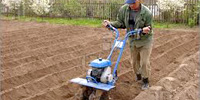How We Grow Things – Our Cultural Practices
Putting the culture back into growing, that’s what we achieve at Vital Veggies – a sharp contrast to the “at war” with nature, conventional chemically based growers of food.
Our entire approach of growing is one of establishing virtuous cycles that expands soil fertility whilst growing food for you today. We’ve talked about our soil and this sets the scene for what happens in growing Vital Veggies.
-
 Managing insect pests: If we have a problem with pests of any kind we look for biological solutions. That may mean plantings antagonistic to the pest, the use of biological deterrents and /or amending the soil to improve fertility. When you grow biologically, it’s the plant that “tells” us what’s going on in the soil. Based on leading work by Dr Phil Callahan, he established how pests respond to the energy signature of the plant. A plants healthy energy signature does not attract insect pests and in fact, an infestation is nature’s reaction to remove sick plants. So in fact, if we eat plants that needed spraying to prevent predation, we are eating food that nature had no intention of us consuming.
Managing insect pests: If we have a problem with pests of any kind we look for biological solutions. That may mean plantings antagonistic to the pest, the use of biological deterrents and /or amending the soil to improve fertility. When you grow biologically, it’s the plant that “tells” us what’s going on in the soil. Based on leading work by Dr Phil Callahan, he established how pests respond to the energy signature of the plant. A plants healthy energy signature does not attract insect pests and in fact, an infestation is nature’s reaction to remove sick plants. So in fact, if we eat plants that needed spraying to prevent predation, we are eating food that nature had no intention of us consuming.
In the quest for an always better soil, and hence healthier plants, if we discover pests, we manage them using biological remedies, note the issue and then amend the soil to address those imbalances so future growth is healthy.
- Soil Bed Shape: With all our gardens we prefer to mound the soil. This has been proven to grow better veggies, and provide more soil surface area. The angle is around 30 degrees and this is very much the angle that soil will naturally assume in a freshly made heap. We like the soil light and fluffy and so we would never walk on, or apply weight to a freshly filled garden bed.
-
 Watering: This vital part of gardening is in fact your responsibility. Your choices are to water by hand with a watering can or by hose, using a trigger actuated spray nozzle.
Watering: This vital part of gardening is in fact your responsibility. Your choices are to water by hand with a watering can or by hose, using a trigger actuated spray nozzle.
We prefer to water using a spray and to direct this upward so the water falls naturally as if raining. If time is a concern we do suggest taking advantage of the easy option to install irrigation at the time of getting your raised bed garden installed.
Please do not forget, you need to make time and take time to water because if you fail to do so the consequences are dire. If you can’t water, get someone else to. Remember, our basic irrigation system on a tap timer will do the job.
If you’re on the drip line irrigation systems we install, give the plants an overhead spray every week of so just to clean the leaves and freshen up the plant.
-
 Feeding the plants: Plants eat café style, and by that we mean, they consume nutrients as if “on a hospital drip feed”. If what the plant needs is not there, growth will suffer. To that end, our soil is blended to ensure it has nutrients and the capacity to store them. This covers all major and trace elements needed for healthy sustained growth. Our observation is that plants respond even more when they are given little “treats”.
Feeding the plants: Plants eat café style, and by that we mean, they consume nutrients as if “on a hospital drip feed”. If what the plant needs is not there, growth will suffer. To that end, our soil is blended to ensure it has nutrients and the capacity to store them. This covers all major and trace elements needed for healthy sustained growth. Our observation is that plants respond even more when they are given little “treats”.
Supplementary Feeding
Biology: we regularly apply pro-biotics to the soil. These microbial organisms boost the soil food web and in turn provide food for the plants. In this task we use both “good” bacterial inoculations and myccorhizal fungi to extend the efficiency of a plants root system by up to a factor of 100 times
- Feeding the biology: we use naturally available sources of complex sugars to feed the soil bacteria; expanding their populations and then grow healthier plants.
- Combined foliar/soil feeding: we feed the plants a fish and kelp meal emulsion which provides a broad spectrum of nutrients and trace elements. This is taken in by the plant, directly through the leaves and by the micro-organisms in the soil.
Everything we use is either certified organic or an acceptable input for organic production. We recommend you follow this supplementary feeding plan or opt to have Vital Veggie Care where amongst other things, we take care of this.
 Soil Cultivation: Once your raised bed is installed we recommend you do not disturb the soil at all. The soil is home to billions of micro-organisms and turning over the soil destroys that habitat. Certainly there is no need to dig your soil at any time.
Soil Cultivation: Once your raised bed is installed we recommend you do not disturb the soil at all. The soil is home to billions of micro-organisms and turning over the soil destroys that habitat. Certainly there is no need to dig your soil at any time. -
Compost applications:
 Between crops we recommend applying biodynamic compost. This should be an even layer over the soil. The maximum application should be no more than 25mm annually so if you have say 5 crops, that’s 5mm in each of 5 applications. Applying it regularly is in the same spirit as our supplementary feeding program. Plants prefer to be fed small amounts at regular intervals and our compost is full of all sorts of natural goodies that plants need. Compost once applied should be worked into the top 10cm of the soil from where, water will release the available nutrients for the plants.
Between crops we recommend applying biodynamic compost. This should be an even layer over the soil. The maximum application should be no more than 25mm annually so if you have say 5 crops, that’s 5mm in each of 5 applications. Applying it regularly is in the same spirit as our supplementary feeding program. Plants prefer to be fed small amounts at regular intervals and our compost is full of all sorts of natural goodies that plants need. Compost once applied should be worked into the top 10cm of the soil from where, water will release the available nutrients for the plants.
- Our Seedlings: There is nothing more wondrous than a seed and the plant which emerges from there within. We grow our own seedlings because we want to do it in a way that cares for the plant. Here’s what we do…
-
 Planting: All seeds are planted into flat trays anywhere up to two or three months before they are needed in the garden. We plant according to a biodynamic planting guide in accord with the principles of biodynamics. Shortly after planting we apply a weak solution of humic acid derived from humates. Then, a few days after, we inoculate the seed bed with arbuscular myccorhizal fungi to improve root health and plant vigour. Once the seed emerges and the seedling is around 1 cm hight we pick the seedling out and transplant it into a 250ml plastic pot. This will allow the plant to grow uninterrupted for some time without restriction to plant or its roots.
Planting: All seeds are planted into flat trays anywhere up to two or three months before they are needed in the garden. We plant according to a biodynamic planting guide in accord with the principles of biodynamics. Shortly after planting we apply a weak solution of humic acid derived from humates. Then, a few days after, we inoculate the seed bed with arbuscular myccorhizal fungi to improve root health and plant vigour. Once the seed emerges and the seedling is around 1 cm hight we pick the seedling out and transplant it into a 250ml plastic pot. This will allow the plant to grow uninterrupted for some time without restriction to plant or its roots.
-
 Growing Out: At this stage, the plant is feed to promote rapid, healthy growth and if needed the plant will be transferred into a larger pot. Each time the plant is transplanted the soil is “sweetened” so the plant always feels as if it is getting a special treat. We achieve this using rock dusts and plant based materials. Attention is paid to ensuring the plant does not become root bound.
Growing Out: At this stage, the plant is feed to promote rapid, healthy growth and if needed the plant will be transferred into a larger pot. Each time the plant is transplanted the soil is “sweetened” so the plant always feels as if it is getting a special treat. We achieve this using rock dusts and plant based materials. Attention is paid to ensuring the plant does not become root bound.
-
 Transplanting: Prior to transplanting the pot is soaked in a weak humic acid solution which improves plant health and reduces transplant shock. All planting is done on a staggered, hexagonal pattern as this will fit more plants into an area and increase yields. We companion plant.
Transplanting: Prior to transplanting the pot is soaked in a weak humic acid solution which improves plant health and reduces transplant shock. All planting is done on a staggered, hexagonal pattern as this will fit more plants into an area and increase yields. We companion plant.
- Here’s our selection of veggies you can choose from…
- Harvesting: This is the pleasure you have and we suggest you follow our harvesting guide if you need help on this.
- Recycling: All plant material from your vital veggies garden can be recycled back into Vital Veggies biodynamic compost if you take advantage of Vital Veggies Care
- Replanting: Once your harvest is done, we will apply compost and replant with the Vital Veggies of your choice. This will be done to maintain a crop rotation around your garden.
So there you have it. At Vital Veggies, we take extraordinarily detailed care of every part of how we grow veggies. The way we do this uses all natural materials, fits into natural cycles and works with nature to give you an outstanding quality of produce. Our cultural practices respect and work with nature and are kind to the plants that become your food, all of which is in harmony with how nature intended.
Vital Veggies is the simple, easy way to grow healthy veggies. If you have a Vital Veggies Visits plan and irrigation setup, you do nothing more than harvest your food - the rest is left to the team of Vital Veggies Master Gardeners.
